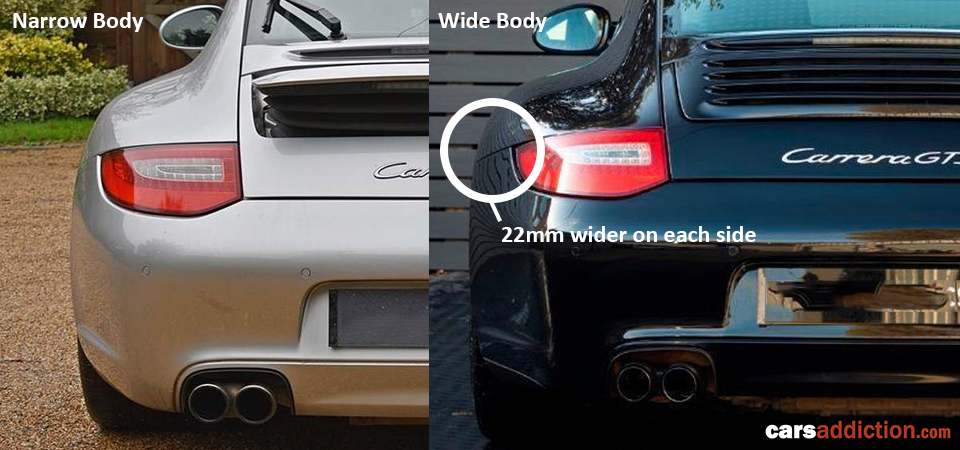
what makes a 911 GTS Porsche
It’s a Carrera S with a few extra boxes checked on the options sheet. That’s the answer you’ll often hear when the question is what’s a GTS? For those in the know, that response sells it short a bit since it isn’t possible to transform a Carrera S into a GTS with a mouse click on the Porsche Car Configurator.
A better informed response shows two dimensions to what makes a 911 GTS: design and performance.
There were only two ways to buy a wide body, two-wheel drive, naturally aspirated 997: the GTS and GT3 RS. You could also count special models like the Sport Classic and Speedster, but these are really just GTS cars in disguise. While the difference seems marginal (i.e. 44 mm wider than the narrow body Carerra), the wider rear track and muscular haunches are noticed by both the eye and the seat. A wide body car has a more aggressive look and offers more grip for the performance minded; it’s also a feature that makes it impossible to build a GTS from a two-wheel drive Carrera S.

The GTS is marked by several other design details inside and outside of the car. A GT3 inspired interior includes a SportDesign steering wheel, plus liberal use of Alcantara across the seat centers and anywhere else the driver and passenger make contact with the car (e.g. steering wheel, arm rests, gear and handbrake levers).
Exterior design elements include a SportDesign front apron with a black spoiler edge, plus a blacked-out rear valance and sideskirts. One controversial feature is the use of the centerlock RS Spyder wheels. Either loved or hated, the 19 inch wheels are also blacked-out and only available as a standard feature on the GTS and Turbo.
Performance is the second dimension that makes a GTS. Though unlike the wide body design that is only available on a Carrera 4S, a Carrera S or 4S buyer could order the X51 Powerkit option to match a GTS spec. This $16,900 option was standard equipment on a GTS and raised horsepower to 408 while moving the maximum torque output of 310 lb ft to the 4,200 RPM rev mark which is 200 RPMs earlier in the rev range in comparison to the standard 3.8-liter engine.
The X51 Powerkit offered these improvement thanks to modified cylinder heads, a carbon-fiber air filter casing, a new variable resonance intake manifold with six tuning flaps vs. a single flap on the standard engine, a sports exhaust system featuring specially designed twin dual-tube tailpipes and modified engine management.
As an enthusiast, it’s important to understand the specs that define the car while also recognizing that the whole is greater than the sum of the parts. It’s the latter that explains why Porsche calls the GTS, “the pinnacle of the Carerra lineup”.